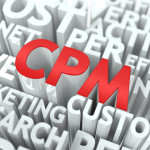 Absent any improvement in the digital media industry’s ability to deliver the viewable impression levels being purchased by advertisers, perhaps changing the currency used to value those impressions would make the most sense.
Absent any improvement in the digital media industry’s ability to deliver the viewable impression levels being purchased by advertisers, perhaps changing the currency used to value those impressions would make the most sense.
Perhaps it’s time for the industry’s standard cost-per-thousand metric to give way to a cost-per-five-hundred rate, which more aptly reflects actual audience delivery levels. Let’s face it, to date, digital advertisers have largely been charged on the basis of their ads being served, with any resulting audience delivery impact, particularly by humans, a secondary consideration.
Ironically, in spite of the measurement challenges surrounding digital media, it has surpassed all but one other media channel in terms of annual spend and according to Vincent Letang, Magna Global’s Director of global forecasting “will potentially eclipse television in terms of overall spending” by 2018.
Do client-side CFO’s read the advertising trade press? They must not. How else can one explain the meteoric growth of a media channel fraught with audience deliverability concerns, allegations of fraud at multiple levels of the distribution chain and a greater likelihood of driving bot rather than human traffic? According to the ANA study; “The Bot Baseline: Fraud In Digital Advertising” fake traffic will cost advertisers in excess of $6.3 billion in 2015.
Surely, the C-Suite within advertiser organizations would not sanction the use of an advertising channel that is delivering $.50 of value for every $1.00 invested. Would they?
What if they were aware that there is actually a market for fake traffic? That’s right, there are firms that sell malware generated bot traffic to a variety of companies, some who knowingly purchase the fake traffic and others who turn a blind eye toward traffic sources.
Then there is the less nefarious, but equally as questionable, practice used by some publishers of traffic sourcing. This involves purchasing traffic from third-parties, referred to as “traffic brokers” or “audience networks” to boost measured audience levels on their websites to enhance their appeal to advertisers and their media buying representatives who are looking for sites with critical mass. The traffic procurement marketplace is not regulated and the practice is typically not divulged to advertisers by the publishers engaged in this activity.
Why should advertisers care? White Ops, who partnered with the ANA on the aforementioned study, found that “sourced traffic” averaged 52% bots and that “publishers and premium publishers were not immune from high bot levels in sourced traffic.” In the study, White Ops referenced uncovered one direct buy from a lifestyle industry vertical premium publisher, which yielded 98% bots in a video ad campaign.
To help combat bot fraud, White Ops suggests that advertisers “maintain a public-facing anti-fraud stance and a highly confidential, continuous monitoring program. According to White Ops “to both deter bot traffickers and defend against disguised bots, advertisers must deploy a dual-monitoring strategy: Monitor conspicuously to deter bot traffickers, and also monitor covertly to detect disguised bot traffic.” Sound advice to be sure.
Unfortunately, the more that the ad industry shines a spot light on the global digital media marketplace, the uglier it gets. Yet in spite of the steady stream of unseemly revelations this sector continues to outpace all others in average annual growth. Go figure.
“Common Sense is that which judges the things given to it by other senses.”
~ Leonardo da Vinci
